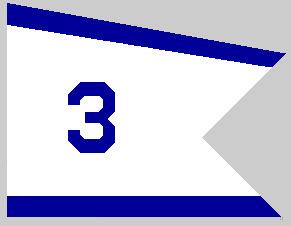Country United States | ||
 | ||
Active Based in Manila's Port Area until major part of Asiatic Fleet withdrew from Manila Bay. Relocated to Cavite in late November,1941. Engagements Philippines Campaign (1941–1942) Commander Lieutenant John D. Bulkeley | ||
Motor Torpedo Boat Squadron Three was a United States Navy squadron based at Cavite, Philippines, from September 1941 to mid-April 1942. It was commanded by Lieutenant John D. Bulkeley and made up of six motor torpedo boats: PT-31, PT-32, PT-33, PT-34, PT-35, and PT-41, the last as the squadron flagship. The other six boats of the squadron remained at Pearl Harbor, Hawaii, and were there when war broke out, eventually being shipped to the Solomons.
After the outbreak of hostilities between the United States and Japan on December 7, 1941, the squadron moved from Cavite to Sisiman Bay on the Bataan Peninsula with the requisitioned tug Trabajador as tender, where it helped in the defense of Bataan and Corregidor during the Japanese invasion of the Philippines. PT-31 and PT-33 were sunk during the battle. The desired practice was for boats to patrol in pairs in the event one PT needed assistance from another. The critical shortage of spares and fuel often prevented such pairing so that one of the small converted patrol yachts, Maryann, Perry, or Fisheries II, or one of the two old destroyers, Peary or Pillsbury, were used to accompany a single PT on patrol.
On March 11, 1942, the remaining boats of the squadron transported General Douglas MacArthur and several high-ranking officers from Corregidor to Mindanao, an act which earned every member of the squadron the Silver Star. PT-32 was abandoned during this mission, reducing the squadron to three boats: PT-41, PT-34, and PT-35.
These three boats were based at Mindanao until mid-April 1942, where two of them (PT-41 and PT-34) attacked the Japanese cruiser Kuma, scoring at least one hit. This was to be the squadron's last action: PT-34 was destroyed by Japanese aircraft, PT-35 had to be scuttled to avoid capture, and PT-41 was commandeered by the U.S. Army to defend Lake Lanao. She was scuttled as well, three days after transfer.
Bulkeley and three other officers were later flown to safety on MacArthur's orders, with a fifth officer joining them shortly after. These five officers were all that remained of this squadron as a result. Three officers and fifteen enlisted men were killed in action or died as prisoners of war, seven evaded capture as guerrillas on Leyte, and 38 POWs were liberated after the war.
The squadron's exploits were immortalized in the book and film They Were Expendable. Bulkeley was awarded the Medal of Honor, the Distinguished Service Cross, the Philippine Distinguished Conduct Star, and the Silver Star during his command of the squadron, making him one of the most decorated U.S. naval officers of World War II.
